A container for party songs |
|
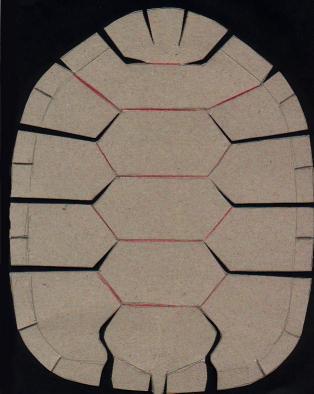 |
The shell of the tortoise is cut from
grey cardboard. I used such cardboard as is found at the back of an A4
writing pad. That also determines the size of the tortoise. This tortoise
is about 24 cm and may contain about 40 sheets of tightly folded A4-sheets.
Folds are made at the red lines on the cardboard
|
||
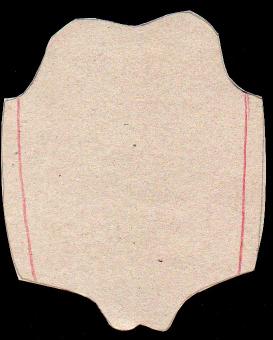 |
The plastron is quite simple being
essentially flat. The rim has to be folded. That can be eased with a few
cuts.
|
||
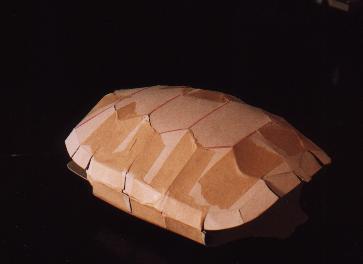 |
The shell is glued together with paper
adhesive tape. The modern type made of plastic cannot be used, as it is
not possible to glue paper onto that.
|
||
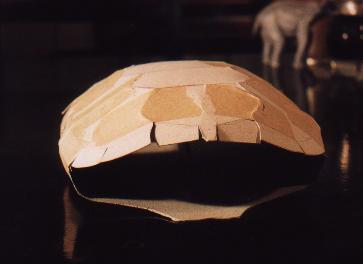 |
|||
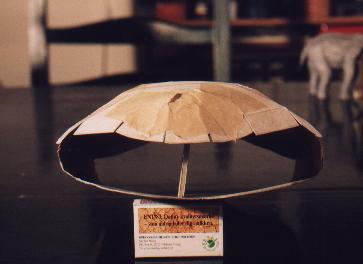 |
To avoid the plastron and the carapace
collapsing small pieces of cardbord or wood may be inserted. They are not
to be glued in place.
|
||
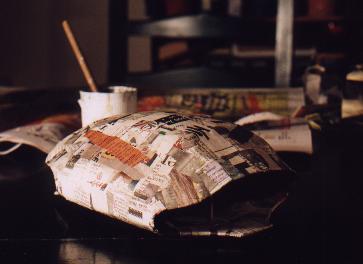 |
The cardboard is now covered by strips
of newspaper. The strips should be allowed to rest for a while after being
glued before being put in place to avoid wrinkles. It is not nescessary
to cover the inner surfaces.
|
||
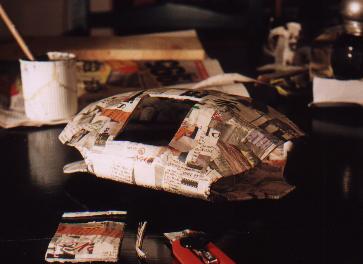 |
A litle door is cut in the carapace
using a knife. The lid is cut slightly smaller than the opening. The rim
of the lid as well as the rim of the openening must be covered with newspaper.
If the lid had not been cut smaller it would not fit.
. |
||
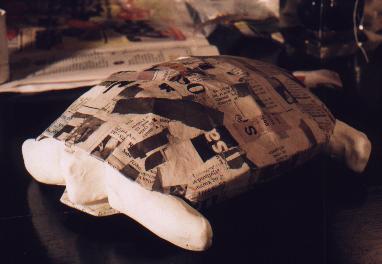 |
Legs, tail and head are modelled in
plasticine. To make the model easy to make I did not model details like
eyes or claws. They are painted on later.
|
||
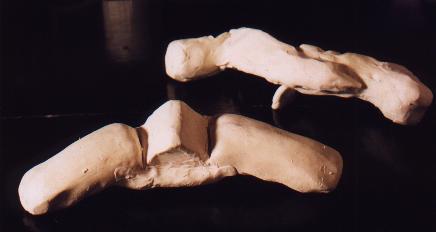 |
The plasticine legs etc. have been
removed from the shield. They are now covered with newspaper making a hollow
shape. Remember to use narrow strips of newspaper.
|
||
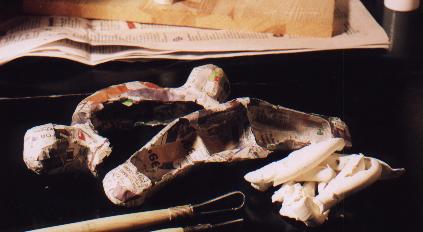 |
When the legs are dry the plasticine is removed, preferrable using a ceramics looped modelling tool shown. The hollow shapes are now to be glued in place (use drops of PVA glue). Holes are closed with newspaper (this can be very tricky!). Pins help to secure them while the construction is drying. | ||
 |
This is the almost complete tortoise. The lid has been fit with hinges and a handle made from ribbon. Leave some slack at the hinges, otherwise the lid will not open easily. A little piece of cardboard (not shown) prevents the lid from falling through the opening. The figure is painted. I used tempera, ochre and black mixed in different proportions. First I coated the figure with a layer of shellac, but I think that was a bad idea as it made the painting difficult. Claws and eyes are just painted. The nostrils are made with a small awl. |
|
|
(c) Ditlev V. Petersen/Potemkin 2003 |